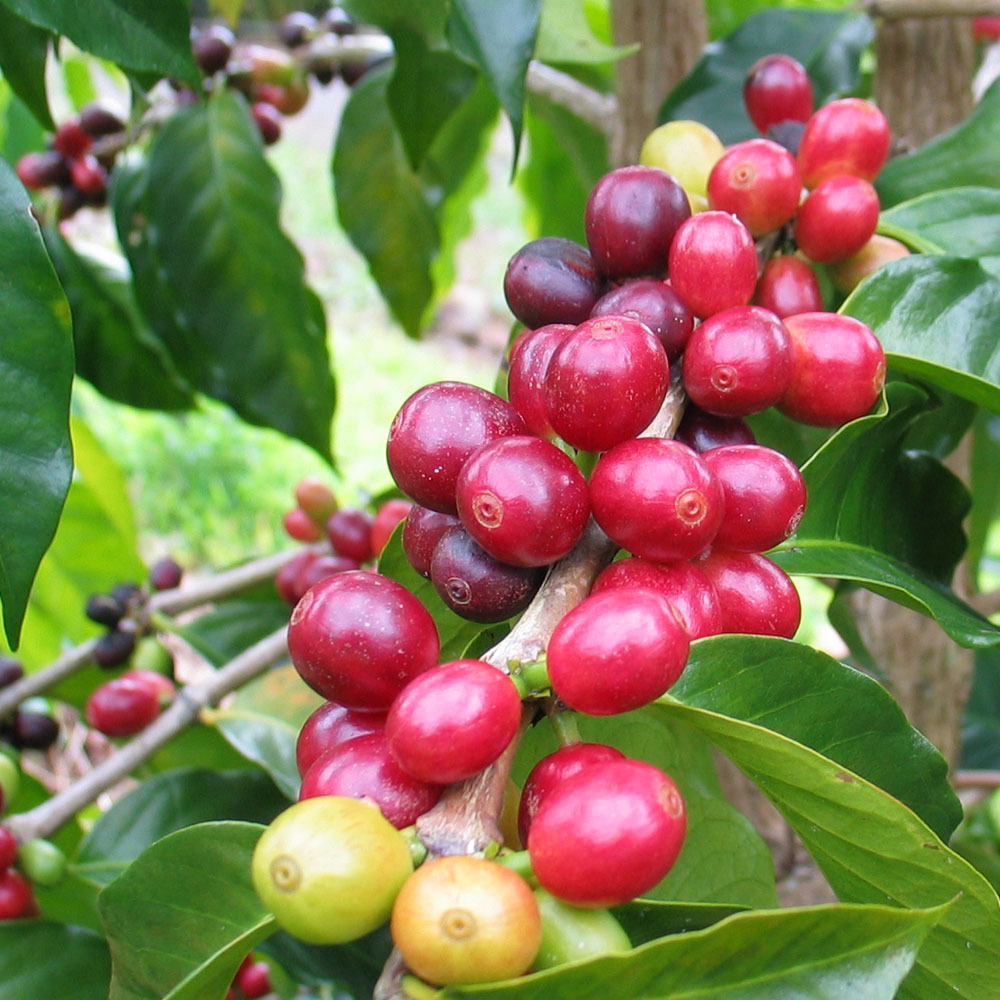Indian monsoon coffee beans are slippery and delicious, with even granules.
A creamy, well-proportioned coffee.
Indian coffee is loved by coffee lovers for several reasons, but the most important is due to a process applied to coffee beans, often referred to as "monsoon". In the past, passengers or cargo travelling to and from India on sailboats took months to reach Europe. The taste and color of the green coffee beans change due to the high humidity in the air on the way, and by the time they arrive at their destination, the coffee beans have changed from the original green to a strange yellow.
Consumers got used to it, so when steamships cut travel time, coffee producers found that consumers still wanted coffee beans that had the same color and taste and were affected by long journeys. In order to recreate the original coffee flavor, a "monsoon" process was used. In May and June of each year, monsoon occurs in southwest India, so during monsoon season, coffee is spread out in special rooms with open walls, about 12 to 20 centimeters thick, and for five days, the beans are raked again and again so that all the beans are exposed to the extremely humid air at that time, and then the beans are loosely packed into bags and piled up so that the monsoon can blow through the bags. The bags were refilled and stacked once a week for seven weeks until the beans changed color and flavor. Finally, the beans are hand-picked to remove those unaffected by the monsoon and bagged for export. October to February is a good time to make "monsoon" coffee.
In addition to Karnataka, fine coffee is grown in Tellichery and Malabar in Kerala in the southwest and Nilgiris in Tamil Nadu, formerly Madras, in the southeast.
Fine Indian coffee is also classified as Arabica plantation coffee, with the best grades A, B, C and T. "Monsoon" coffee is divided into premium Malabar AA coffee and "Monsoon" Basanically coffee. India also produces coffee beans.
At present, the coffee industry is facing problems-heavy bureaucracy, excessive taxation, lack of investment. Currently, the Indian Cffee Board controls the coffee industry, buying coffee and selling it. Coffee was sold at a mass auction. These coffees are blended together to achieve a certain amount of trade, which in turn eliminates differences between estates and regions, thus leaving many premium coffee producers with insufficient incentive to produce distinctive, high-quality beans. The government tried to solve this problem in 1992, and as a result of its efforts, the famous Valley Nuggets were obtained from seeds of grade A coffee plantations in several premium coffee producing areas. The hope is that this will encourage other coffee growers, most of whom are genuinely eager to break into the gourmet coffee market.

Important Notice :
前街咖啡 FrontStreet Coffee has moved to new addredd:
FrontStreet Coffee Address: 315,Donghua East Road,GuangZhou
Tel:020 38364473
- Prev

Panamanian Coffee processing method Honey treatment and traditional washing
The microclimate of the Panamanian highlands is the most important resource that makes Panamanian coffee unique. The most important resource that makes Panamanian coffee unique is its microclimate. The east-west environment of the Republic of Panama allows cold air to flow through the Central Mountains and converge above 6500 feet, creating a variety of microclimates in the Boquete and Volcn Candela regions.
- Next

Boutique Coffee Panamanian Coffee Variety Kaduai, Kaddura, 30% Rosa
The microclimate of the Panamanian highlands is the most important resource that makes Panamanian coffee unique. The most important resource that makes Panamanian coffee unique is its microclimate. The east-west environment of the Republic of Panama allows cold air to flow through the Central Mountains and converge above 6500 feet, creating a variety of microclimates in the Boquete and Volcn Candela regions.
Related
- Does Rose Summer choose Blue, Green or Red? Detailed explanation of Rose Summer Coffee plots and Classification in Panamanian Jade Manor
- What is the difference between the origin, producing area, processing plant, cooperative and manor of coffee beans?
- How fine does the espresso powder fit? how to grind the espresso?
- Sca coffee roasting degree color card coffee roasting degree 8 roasting color values what do you mean?
- The practice of lattes: how to make lattes at home
- Introduction to Indonesian Fine Coffee beans-- Java Coffee producing area of Indonesian Arabica Coffee
- How much will the flavor of light and medium roasted rose summer be expressed? What baking level is rose summer suitable for?
- Introduction to the characteristics of washing, sun-drying or wet-planing coffee commonly used in Mantenin, Indonesia
- Price characteristics of Arabica Coffee Bean Starbucks introduction to Manning Coffee Bean Taste producing area Variety Manor
- What is the authentic Yega flavor? What are the flavor characteristics of the really excellent Yejasuffi coffee beans?

